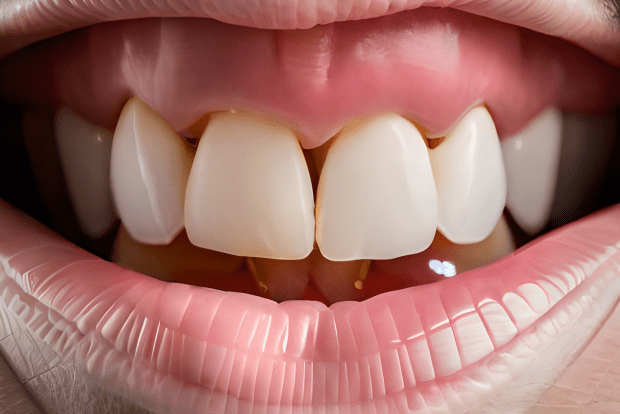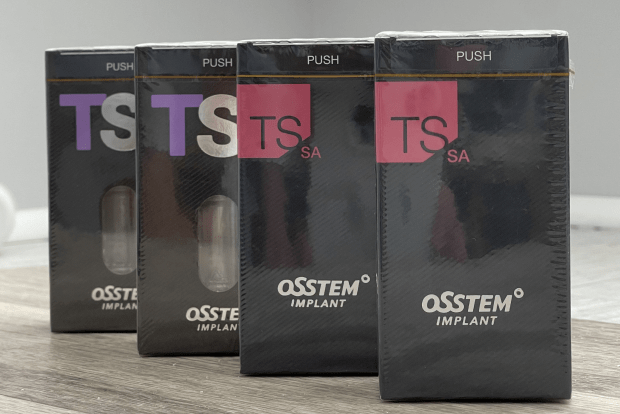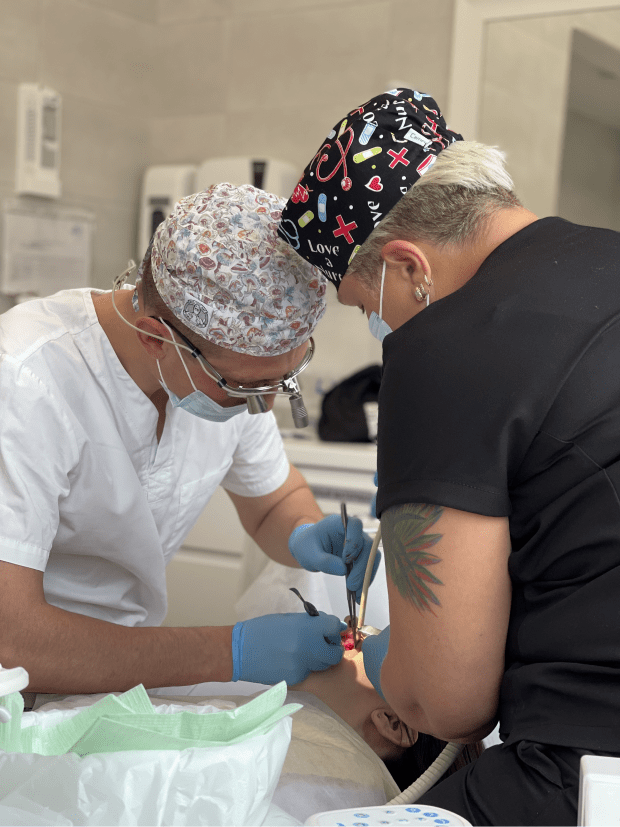Rejection of the implant is a process in which the patient's body rejects the implanted implant. This is a relatively rare but serious complication that can occur after dental implantation and can lead to loss.

Signs and Symptoms of Rejection:
The following symptoms and signs of implant rejection can help you seek timely medical attention and reduce the risk of peri-implantitis. Swelling, pain, and fever in the first 5-7 days after implant placement are considered normal reactions of the body to the procedure. But if the symptoms persist beyond the specified period and worsen, it may indicate a problem.
Key signs of implant rejection:
- Inflammation and swelling of soft tissues.
- Bleeding and discharge of pus.
- Unpleasant odor from the oral cavity.
- Severe pain.
- Body temperature rising to 38°C and higher.
- Exposure of the implant body.
- Mobility of the installed structure.
Sometimes, the fact that the implant has not integrated properly may not be indicated at all, and the pathological process may be entirely asymptomatic or only manifest with one of the above symptoms. Regardless of which signs of implant rejection occur, it is important to remain vigilant and monitor your well-being after implantation. If you suspect implant rejection, it is recommended to consult your dentist immediately. In the early stages of inflammation, there are more chances to successfully save the implant and prevent serious complications.

It is also important to remember that choosing reliable and high-quality implants, as well as following all recommendations and protocols, are key factors in reducing the risk of rejection. In our Dental Implant Center, we use only original, high-quality implants from Straumann, Osstem, MegaGen, MIS, and Nobel Biocare, which is why we can guarantee a successful implantation result.
Causes of Implant Rejection:
According to statistics, implant rejection occurs in 1-2% of cases. However, when using high-quality implants and following surgical protocols, this rate drops to 0.2-0.5%. Conscientious dental clinics that prioritize sterility and protocol compliance guarantee success in 99% of cases.
Medical Errors: Failure to adhere to the surgical protocol and mistakes during implant placement can lead to rejection.
Improper Assessment: Insufficient examination of the patient's condition and bone structure can be a cause of rejection.
Prosthetic Errors: An improperly loaded prosthesis can misload the implanted root and negatively impact implant stability and integration.
Bone Structure: If the bone is unsuitable for implantation or its density is insufficient, the implant will not integrate. The doctor's diligence in explaining this is essential.
Rejection Timeframe: Implant rejection due to a poorly performed operation occurs in the first few months after installation. Symptoms include inflammation, unpleasant odor, various types of pain, swelling, and may involve other signs requiring immediate consultation with a doctor. Rejections occurring several years after implantation due to poor personal hygiene and neglect of regular check-ups are much more common. Unfortunately, rejections due to the patient's own negligence, such as using teeth to open bottles and similar actions, are not uncommon.
Preventing Rejection:
To prevent implant rejection and ensure successful treatment, it is essential to follow these recommendations:
- Choose a Quality Clinic:
- Comprehensive Assessment:
- Choose Quality Implants:
- Follow Doctor's Recommendations:
- Pay Special Attention to Oral Health and Hygiene:
Give preference to clinics with a history, experienced doctors, and good technical equipment. Large centers often invest in equipment and staff training, minimizing the risks of implant rejection.
Undergo a comprehensive recommended examination by a doctor and disclose all your health problems without withholding any information. Thorough examination helps carry out all necessary pre-treatment and sanitation procedures, preventing potential complications.
Avoid skimping on implant selection. Well-known brands with local representation and commonly used in various clinics provide more guarantees and fewer risks of rejection.
Strictly follow the doctor's recommendations both before and after the operation. This includes refraining from harmful habits and proper oral care.
Maintain oral hygiene: brush your teeth 2-3 times a day (preferably after every meal), rinse your mouth with antiseptic solutions, use dental floss or an irrigator to remove food residues from interdental spaces.

Following these recommendations will help reduce the risks of implant rejection and ensure successful and long-term tooth restoration.
What to Do When Signs of Rejection Occur:
Actions for patients when symptoms appear:
- Immediately schedule an appointment at the clinic at the first signs of implant rejection. Quick action can save the implant and prevent serious complications and costly retreatment.
- Follow the doctor's recommendations – take prescribed medications promptly and adhere to the treatment regimen.
Treatment of Rejection:
Examination: The doctor will conduct an examination and radiological assessment to evaluate the extent of implant and surrounding tissue damage.
Early-stage Treatment: If inflammation has just begun and affects only the surrounding soft tissues, the doctor will perform procedures to clean, disinfect, and treat the soft tissues around the implant.
Antibiotic Therapy: In cases where inflammation has spread to deeper tissues, a course of antibiotic therapy is prescribed.
Bone Grafting: If the infection has affected the bone tissue, bone grafting may be required to restore damaged areas.
Structure Removal: In cases of severe tissue damage and bone loss, a decision may be made to remove the implant and subsequently reconstruct the tissues and re-implant.
The doctor will determine the necessary measures based on the symptoms and examination results. It is crucial to seek medical attention promptly to increase the chances of saving the implant and successful treatment.
Possibility of Re-Implantation:
Conditions and timing for the re-implantation of the implant:
Infection Clearance: Before re-implantation, it is necessary to ensure the complete absence of infection and inflammation. After treatment and monitoring, it is possible to consider re-implantation.
Recovery Time: The time between the removal of the non-integrated implant and re-implantation takes 1-2 months. This period allows the tissues to recover and ensure the successful integration of the new implant.
Assessment of the Rejection Cause: The doctor will conduct a detailed examination and identify the cause of peri-implantitis. If the causes were chronic diseases, patient negligence, or the body's specific reactions to foreign bodies, repeated attempts may be ineffective.
Alternative Treatment Methods: In cases where re-implantation is not possible, the doctor will suggest alternative methods for restoring missing teeth.

Contraindications and Solutions in Case of Re-Implantation Impossibility:
Re-implantation is possible in most clinical cases but requires careful evaluation and preparation. People often turn to us as a last resort, so the doctors at our center have extensive experience in treating implant rejections and re-implantation.
We offer the best options for tooth restoration for each of our patients, as well as the possibility to pay for our services in convenient 12-month installments.









